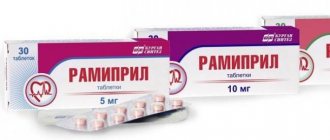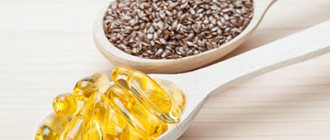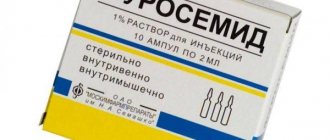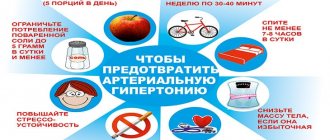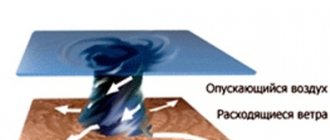Instructions for use LIPRAZID
In patients with dehydration and electrolyte imbalance due to previous diuretic treatment, arterial hypotension may occur after taking Liprazide. To prevent it, diuretics should be stopped 2-3 days before starting Liprazide treatment.
Before prescribing Liprazide, patients should be informed about possible signs of angioedema (difficulty swallowing and breathing, swelling of the face, limbs, eyes, lips, tongue) in order to promptly stop taking the drug and seek medical help.
Liprazide is prescribed with caution to patients with hyperkalemia, aortic stenosis, impaired function or progressive liver disease.
Caution should be exercised when using Liprazide in patients who are planning to undergo surgery under anesthesia.
Caution should be exercised when prescribing Liprazide to patients with impaired renal function, hypovolemia (there is a risk of developing hypotension), collagenosis, persons on a diet with limited sodium content and on hemodialysis. Treatment of these patients should begin with the administration of lower doses of the drug.
The effectiveness and tolerability of the drug is the same in patients of different age groups, but when using the drug in elderly people, it should be taken into account that in patients of this group the elimination of lisinopril and hydrochlorothiazide from the body slows down.
The drug should be used with particular caution in patients with coronary artery disease and with cerebrovascular disorders, since severe hypotension in them can lead to the development of myocardial infarction or ischemic stroke.
The drug is prescribed with caution to patients with mitral and/or aortic stenosis, an obstructive form of hypertrophic cardiomyopathy.
In patients with severe heart failure, ACE inhibitors can cause arterial hypotension, sometimes oliguria, and azotemia.
In patients with renal artery stenosis, when taking ACE inhibitors, the level of glomerular filtration may decrease, which leads to further impairment of renal function, therefore prescribing the drug to such patients is not recommended. Taking Liprazide is also not recommended for patients with renal failure with CC < 30 ml/min.
Chronic use of hydrochlorothiazide reduces uric acid excretion and may contribute to the development of gout.
Hydrochlorothiazide may reduce glucose tolerance, so patients with diabetes need to adjust the dose of hypoglycemic agents, including insulin.
Patients with hypovolemia, hyponatremia, hypochloremic alkalosis, hypomagnesemia or hypokalemia should restore fluid and electrolyte balance before starting treatment and regularly monitor serum electrolyte levels.
Hydrochlorothiazide may reduce urinary calcium excretion, causing a slight increase in serum calcium concentrations. Significant hypercalcemia may be a sign of hidden hyperparathyroidism, so it is recommended to discontinue thiazide diuretics until parathyroid function is examined.
In patients taking ACE inhibitors, certain types of membrane filters for hemodialysis, hemofiltration or apheresis (polyacrylonitrile, methylsulfonate) may cause anaphylactic reactions.
During treatment with Liprazide, exposure to the sun should be limited (risk of developing photosensitivity).
During treatment with Liprazide, alcohol consumption is not recommended.
Use in pediatrics
The effectiveness and safety of the drug in childhood and adolescence have not been studied, therefore Liprazide should be used only for the treatment of adults.
Impact on the ability to drive vehicles and operate machinery
Due to the risk of arterial hypotension, it is not recommended to drive vehicles or operate other machinery for several hours after taking the drug.
The question of the ability to engage in activities that require concentration and speed of psychomotor reactions should be decided only after assessing the patient’s individual response to the drug.
Compound
- 1 tablet of Liprazide 10 contains 12.5 mg of hydrochlorothiazide and 10 mg of lisinopril. Additional substances: corn starch, mannitol, yellow iron oxide, magnesium stearate, calcium hydrogen phosphate dihydrate.
- 1 tablet of Liprazide 20 contains 12.5 mg of hydrochlorothiazide and 20 mg of lisinopril. Additional substances: corn starch, mannitol, yellow iron oxide, magnesium stearate, calcium hydrogen phosphate dihydrate.
Interaction
When using lisinopril with:
- lithium preparations temporarily increase the lithium in the blood and develop a toxic effect;
- anti-inflammatory non-steroidal drugs weaken the antihypertensive effect, hyperkalemia and deterioration of kidney function - this effect is usually reversible;
- Allopurinol increases the risk of renal dysfunction and leukopenia ;
- Lovastatin increases the risk of hyperkalemia ;
- Heparin, Cyclosporine, trimethoprim increases the likelihood of deterioration of kidney function and the appearance of hyperkalemia ;
- cytostatics, immunosuppressants, Procainamide increases the risk of leukopenia ;
- sympathomimetic agents may weaken the hypotonic effect of angiotensin-converting enzyme inhibitors ;
- tricyclic antidepressants, painkillers and antipsychotics increase hypotension ;
- hypoglycemic agents may reduce blood glucose
- Potassium-sparing diuretics and potassium supplements increase the risk of hyperkalemia ;
- diuretics enhance the antihypertensive effect;
- loop diuretics (Furosemide, ethacrynic acid) may develop arterial hypotension of varying severity;
- corticosteroids and estrogens may weaken the antihypertensive effect of the drug;
- antacids are likely to worsen the bioavailability of lisinopril .
Lisinopril is allowed to be prescribed together with thrombolytics, acetylsalicylic acid, β-blockers and nitrates.
When using hydrochlorothiazide with:
- non-depolarizing muscle relaxants stimulate the action of the latter and increase sensitivity to tubocurarine ;
- cardiac glycosides may increase the likelihood of side effects of the latter as a result of hypokalemia and hypomagnesemia ;
- drugs that cause fluctuations in the level of potassium in the blood (antiarrhythmic drugs of classes 1 and 3, antipsychotics and some others), the risk of cardiac arrhythmias ;
- Difluzanil increases the content of hydrochlorothiazide in the blood and decreases its hyperuricemic effect;
- anti-inflammatory non-steroidal drugs weaken the antihypertensive, natriuretic and diuretic effects of thiazides , increasing the risk of renal dysfunction;
- Diazepam, ethanol, narcotic analgesics, barbiturates, antidepressants are likely to enhance the hypotensive effect of hydrochlorothiazide ;
- lithium salts increase the content of lithium salts in the blood to toxic levels;
- pressor amines and norepinephrine weaken their effect on blood pressure;
- hypoglycemic drugs may reduce blood glucose hypoglycemia ;
- Sulfinpyrazone, Probenecid and Allopurinol may require dosage adjustment of uricosuric drugs , since hydrochlorothiazide increases uric acid in the blood;
- other antihypertensive drugs increase their effect;
- cytotoxic drugs worsen the renal excretion of the latter, as a result of which their myelosuppressive effect increases;
- salicylates enhance their toxic effect on the nervous system;
- anticholinergic drugs increase the bioavailability of thiazide-type diuretics;
- Cyclosporine increases the risk of hyperuricemia and gout;
- beta blockers and Diazoxide are likely to enhance their hyperglycemic effect;
- Amphotericin B, laxatives, motility stimulants, Calcitonin, glucocorticosteroids, adrenocorticotropic hormone worsen electrolyte imbalance;
- Vitamin D and calcium salts calcium excretion and increase its level in the blood;
- Trimethoprim increases the likelihood of developing hyperkalemia ;
- Carbamazepine may develop hyponatremia ;
- sympathomimetics may reduce the hypotensive effect;
- Digoxin increases the toxicity of the latter;
- tetracyclines or activated carbon weaken the absorption of hydrochlorothiazide ;
- Quinidine increases the possibility of ventricular fibrillation .
Price, where to buy
The price of Liprazid 10 No. 30 in Ukraine is about 64 hryvnia, and in Russia the price of a similar package is close to 306 rubles.
- Online pharmacies in UkraineUkraine
Pharmacy24
- Liprazide 20 No. 30 tablets PAT NEC "Borshchagivsky chemical and pharmaceutical plant", Kiev, Ukraine
66 UAH. order - Liprazide 10 N30 tablets PAT NEC "Borshchagivsky chemical and pharmaceutical plant", Kiev, Ukraine
50 UAH order
Analogs
Level 4 ATX code matches:
Akkuzid
Enap-N
Iruzid
Co-Diroton
Enalozide
Enap NL
Enapril-N
Capozide
Tritace Plus
Enzix
Co-Renitec
Hartil N
Hartil D
Noliprel
Ko-Perineva
Kaptopres
Iruzid, Co-Diroton, Lisinopril, Lisopress, Lisoretic, Lisothiazide, Lopril Bosnalek.
Contraindications
- Hereditary or cryptogenic angioedema , including those caused by the use angiotensin-converting enzyme inhibitors .
- Sensitization to the components of the drug, other angiotensin-converting enzyme blockers or sulfonamide derivatives.
- Hypertrophic cardiomyopathy due to hemodynamic disturbances.
- Aortic or mitral stenosis .
- Bilateral artery stenosis or stenosis of the artery of a single kidney.
- Cardiogenic shock.
- Myocardial infarction in the acute period with unstable hemodynamics.
- Condition after kidney transplant.
- Severe renal failure .
- Mechanical obstruction of the urinary tract.
- Disorders of water-salt metabolism.
- Hemodialysis using high-strength membranes.
- Severe diabetes mellitus .
- Hepatic encephalopathy.
- Severe liver failure.
- Primary hyperaldosteronism.
- Anuria.
- Porphyria.
- Exacerbation of gout .
Side effects
- Circulatory phenomena: arterial hypotension, myocardial infarction, fainting, secondary cerebrovascular accidents due to a significant decrease in pressure, tachycardia, palpitation, bradycardia, arrhythmia, angina pectoris, chest pain, impaired AV conduction, necrotizing vasculitis, Raynaud's syndrome.
- Phenomena from nervous activity: dizziness , imbalance, loss of consciousness, headache , disorientation in space, symptoms of depression , mood lability, decreased appetite , changes in taste, anorexia , impaired sense of smell, impaired concentration, apathy , slowed thinking, paresthesia , increased fatigue, vertigo, asthenic syndrome , general weakness, drowsiness , convulsions , confusion, agitation, irritability, anxiety, insomnia .
- Digestive phenomena: decreased appetite, heartburn , increased thirst , vomiting, nausea, sialorrhea , abdominal pain, dyspepsia, diarrhea, constipation, stomatitis, glossitis, hepatic encephalopathy, cholecystitis , dry mouth, sialoadenitis, hepatitis, pancreatitis , liver failure , jaundice, hepatic coma .
- Respiratory phenomena: changes in breathing rhythm, dry cough , rhinitis, bronchitis, sinusitis, distress syndrome, allergic pneumonia, bronchospasm, shortness of breath , respiratory tract infections.
- Skin phenomena: hair loss, increased sweating, pemphigoid reactions, psoriasis, skin hyperemia, epidermal toxic necrolysis, erythema multiforme, eczema, photosensitivity, purpura, exacerbation of systemic lupus erythematosus , exfoliative dermatitis, pseudolymphoma of the skin.
- Hematopoietic phenomena: decreased hemoglobin and hematocrit, anemia, leukopenia, leukocytosis, erythrocytopenia, thrombocytopenia, purpura, eosinophilia, neutropenia, lymphadenopathy, agranulocytosis, myelosuppression.
- Genitourinary phenomena: renal dysfunction, uremia, glucosuria, polyuria, acute renal failure, anuria, oliguria, interstitial nephritis , decreased potency, gynecomastia .
- Immune phenomena: anaphylactic shock, anaphylactic reactions, autoimmune diseases.
- Allergic phenomena: itching , angioedema , difficulty swallowing, urticaria .
- Changes in laboratory data: changes in electrolyte balance ( hypochloremia, hypomagnesemia, hyponatremia, hypokalemia, hypercalcemia), hyperuricemia, hyperglycemia, hyperkalemia, hypercholesterolemia , increased urea and creatinine, hyperbilirubinemia, hypertriglyceridemia , increased concentrations of liver enzymes, proteinuria , decreased sensitivity to glucose , increased erythrocyte sedimentation rate .
- Other phenomena: arthritis , increased body temperature, muscle spasms, gout , muscle pain, xanthopsia, temporary decrease in visual acuity, conjunctivitis , tinnitus, diabetes mellitus, hypochloremic alkalosis, ear pain.
